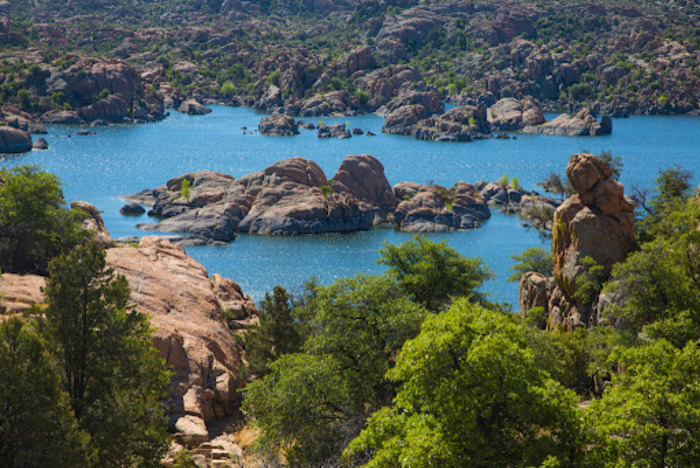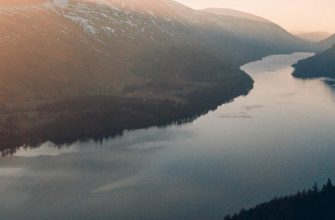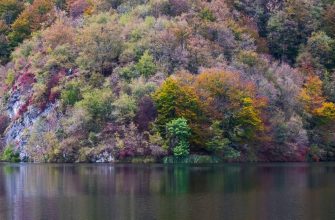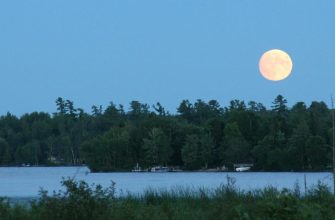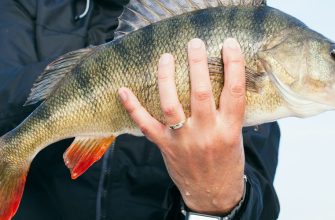- Overview of Watson Lake, Arizona
- Location
- History
- Size and Depth
- Water Level
- Lake Map
- Directions to Watson Lake, AZ
- Watson Lake Fishing
- Largemouth Bass Angling
- Bass Behavior in Watson Water
- Best Time to Hook
- Best Angling Spots and Techniques
- Highly Recommended Bait, Tackle & Gear
- Rainbow Trout Angling
- Trout Behavior in Watson Water
- Best Time to Angle
- Best Angling Spots and Techniques
- Highly Recommended Bait, Tackle & Gear
- Channel Catfish Angling
- Catfish Behavior in Lake Watson
- Best Time to Catch
- Best Angling Spots and Techniques
- Highly Recommended Bait, Tackle & Gear
- White and Black Crappie Catching
- Crappies Behavior in Lake Watson
- Best Time to Catch
- Best Angling Spots and Techniques
- Highly Recommended Bait, Tackle & Gear
- Bluegill and Sunfish Catching
- Bluegill and Sunfish Behavior in Lake Watson
- Best Time to Catch
- Best Angling Spots and Techniques
- Highly Recommended Bait, Tackle & Gear
- Angling Regulations
- Regulations
- Species-Specific Regulations
- Catch and Release
- Angling Permits
- License
- Watson Lake Specific Permits
- Boating and Other Activities
- Surrounding Attractions
- Plan Your Visit
- Wildlife Near Watson Lake
- Birds
- Mammals
- Reptiles and Amphibians
- Aquatic Life
- FAQs
- Q: Where is Watson Lake located?
- Q: What are some tips for angling at Watson Lake?
- Q: What kind of fish can be found in Watson Lake?
- Q: How high is Watson Lake?
- Q: Are there picnic areas available at Watson Lake?
- Q: Is there any lodging available at Watson Lake?
- Q: Are boats with electric motors allowed at Watson Lake?
- Q: What activities can visitors enjoy at Watson Lake?
- Q: How many campsites are available at Watson Lake?
- Q: What is the best time of year to visit Watson Lake for angling?
Welcome to Watson Lake, a captivating destination for angling enthusiasts seeking the thrill of catching trophy fish. Located in AZ, Watson Lake offers a unique and rewarding angling experience that attracts both seasoned anglers and beginners alike.
With its serene beauty and abundant fish populations, Watson Lake has become a popular spot for angling enthusiasts. The lake is home to a variety of species, including largemouth bass and crappie, providing ample opportunities for anglers to test their skills and reel in impressive catches.
In this article, we aim to provide valuable tips and techniques that will enhance your angling success in Watson Lake. Whether you are a novice angler or a seasoned pro, our insights will help you make the most of your angling expedition in this picturesque Arizona lake.
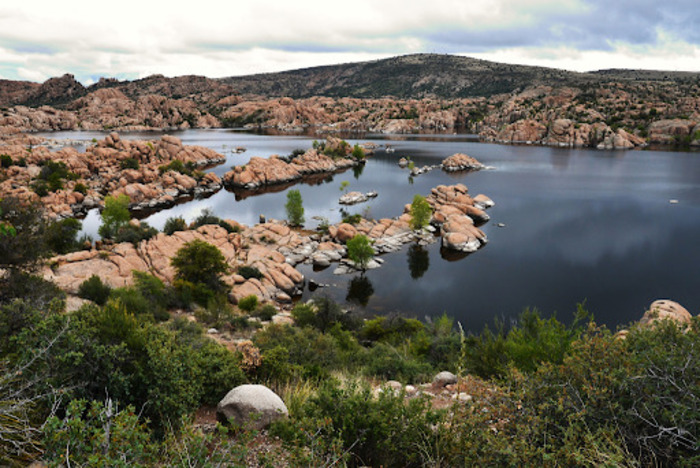
So, grab your gear and get ready for an unforgettable angling adventure at Watson Lake. Discover the secrets to landing trophy catches and create memories that will last a lifetime. Let’s dive into the world of Watson Lake angling and unlock the strategies that will lead you to success.
Overview of Watson Lake, Arizona
Location
Watson Lake is a beautiful reservoir located in Prescott, Arizona. It is nestled amidst the stunning Granite Dells, which adds to its picturesque charm. This man-made lake offers a serene and tranquil setting for angling enthusiasts to indulge in their favorite pastimes.
History
The creation of Watson Lake dates back to 1915 when the Chino Valley Irrigation District constructed a dam on Granite Creek, resulting in the formation of the lake. Over the years, it has become a popular destination for anglers seeking a memorable angling experience.
Size and Depth
Watson Lake spans approximately 380 acres, providing ample space for anglers to explore and find their perfect angling spot. The lake boasts an average depth of 25 feet, offering a diverse habitat for various species.
Water Level
The water level of Watson Lake can vary depending on the season and rainfall. It is essential for anglers to stay updated on current water levels to ensure the best angling conditions.
Lake Map
To make the most of your angling trip to Watson Lake, it is helpful to have a lake map. The map provides valuable information on the lake’s structure, depths, and potential angling areas. You can easily find a detailed map on the official Prescott website.
Directions to Watson Lake, AZ
Getting to Watson Lake is convenient for both local and out-of-town anglers. From downtown Prescott, head north on State Route 89 and take a right onto Watson Lake Road. Follow the signs that lead you directly to the lake. Parking facilities are available near the lake’s entrance.
Watson Lake Fishing

Largemouth Bass Angling
Bass Behavior in Watson Water
Understanding the behavior of largemouth bass in Watson Lake is crucial for successful angling. Weather conditions and water temperature play a significant role in fish behavior. Bass tend to be more active and feed aggressively when the water temperature is between 60°F and 75°F (15.5°C – 23.9°C). During warmer months, bass are often found in shallow waters near underwater structures like fallen trees, rocks, or weed beds. However, in colder months, they tend to move into deeper waters.
Best Time to Hook
To increase your chances of landing a trophy largemouth bass in Watson Lake, it’s important to consider the best time to catch. Early morning and late afternoon are generally the most productive times of the day. Bass are more active during low light conditions, such as dawn and dusk. Additionally, bass tends to be more active during the spring and fall seasons when the water temperature is optimal.
Best Angling Spots and Techniques
Watson Lake offers several excellent angling spots for largemouth bass. One popular spot is near the submerged trees and brush along the shoreline. These areas provide cover for bass and attract baitfish. Another productive spot is around underwater structures like rocky points and drop-offs.
Read more: Candlewood Lake Fishing Guide: Fishing Camps, Fishing Seasons – Connecticut
When it comes to techniques, using topwater lures early in the morning or late in the evening can be highly effective. The surface activity of the water during these times often entices bass to strike. During the day, using plastic worms or jigs near underwater structures can also yield good results. It’s important to experiment with different techniques and adjust based on the fish’s response.
Highly Recommended Bait, Tackle & Gear
To optimize your largemouth bass angling experience in Watson Lake, it’s essential to have the right bait, tackle, and gear. Here are some recommendations:
- Bait: Texas-rigged plastic worms, crankbaits, spinnerbaits, and topwater lures like buzzbaits or poppers.
- Tackle: Medium to heavy-action angling rods, preferably with fast or extra-fast action, paired with a baitcasting reel. Use monofilament or fluorocarbon angling line in the range of 10-17 pounds.
- Gear: A good quality angling rod and reel combo, angling line, hooks, weights, and a tackle box to store your gear.
Rainbow Trout Angling
Trout Behavior in Watson Water
Trout behavior in Lake Watson is influenced by weather conditions and water temperature. Understanding these factors can help anglers increase their chances of a successful angling trip.
Trout are known to be more active and feed more aggressively in cooler water temperatures. They tend to stay in deeper areas of the lake during hot summer months when the water temperature rises.
Additionally, changes in weather patterns can affect their behavior. For example, after a rainstorm, trout may swim closer to the surface to feed on insects that have been washed into the lake.
Best Time to Angle
To maximize your chances of catching rainbow trout in Lake Watson, it’s important to consider the best time to angle.
The optimal seasons for trout angling in this area are spring and fall. During these seasons, the water temperature is cooler, and the trout are more active.
Early morning and late afternoon are the best times of day to angle for rainbow trout. During these times, the trout are more likely to be actively feeding near the lake’s surface.
Best Angling Spots and Techniques
When angling for rainbow trout in Lake Watson, there are several spots that are known to be productive. The northern shoreline and the area near the dam are popular angling spots for trout. Anglers have also reported success near submerged structures such as fallen trees and rock formations.
When it comes to techniques, using light spinning tackle with a 4-6 lb test line is recommended. Popular techniques for catching trout include using artificial lures such as spinners and spoons, as well as live bait such as worms or powerbait.
Highly Recommended Bait, Tackle & Gear
To increase your chances of success when angling for trout in Lake Watson, it is important to have the right bait, tackle, and gear. Highly recommended baits for rainbow trout include worms, powerbait, and small artificial lures such as spinners or spoons. When it comes to tackle, using light spinning tackle with a 4-6 lb test line is ideal for targeting rainbow trout. It’s also important to have appropriate gear such as an angling rod, reel, angling line, hooks, and a landing net.
Channel Catfish Angling
Catfish Behavior in Lake Watson
When it comes to catfish angling in Lake Watson, understanding the behavior of these fish is crucial. Factors such as weather conditions and water temperature can greatly affect their behavior and, consequently, your angling success.
Channel catfish are known to be more active and feed more vigorously in warmer water temperatures. As the water temperature rises, their metabolism increases, making them more responsive to bait. During hot summer months, when the water temperature is at its peak, you can expect catfish to be more active near the surface.
Additionally, weather conditions play a significant role in their behavior. Channel catfish tend to be more active during periods of low light, such as early morning or late evening. They are also more likely to feed before or after a rain shower. Keep an eye on the weather forecast and plan your angling trips accordingly for optimal results.
Best Time to Catch
To maximize your chances of a successful channel catfish angling experience in Watson Lake, it’s important to know the best times to catch. The seasons and times of day can greatly affect their behavior and feeding patterns.
During the spring and fall seasons, when the water temperature is moderate, catfish are highly active and easily enticed by bait. Early morning and late afternoon are particularly productive times to catch them. As the temperatures rise during the summer months, angling during the cooler parts of the day, such as early morning or evening, is recommended.
Best Angling Spots and Techniques
Finding the best angling spots in Watson Lake is essential for a successful catfish angling adventure. Look for areas with underwater structures such as submerged trees, rocks, or drop-offs. These structures provide hiding spots for catfish and attract their prey, making them prime angling locations.
When it comes to techniques, using bottom-angling rigs with strong and durable tackle is effective for targeting catfish. Popular baits include chicken liver, nightcrawlers, and stink baits. Cast your baited hook near the underwater structures and allow it to settle on the lake bottom. Be patient and wait for the subtle nibbles that indicate a catfish bite.
Highly Recommended Bait, Tackle & Gear
To increase your chances of a successful catfish angling experience, having the right bait, tackle, and gear is essential. Here are some highly recommended options:
- Bait: Chicken liver, nightcrawlers, stink baits
- Tackle: Strong and durable bottom angling rigs, hooks, and sinkers
- Gear: Angling rod and reel suitable for medium to heavy angling, landing net, angling line (15-25 lb test), tackle box for organizing your gear
White and Black Crappie Catching
Crappies Behavior in Lake Watson
Understanding the behavior of crappies in Lake Watson is crucial for successful angling. Weather conditions and water temperature play a significant role in influencing their behavior.
Crappies tend to be more active and feed actively when the water temperature is in the range of 50°F to 65°F (10°C to 18°C). They prefer calm and stable weather conditions with minimal wind, as this allows them to locate prey more effectively. In colder months, crappies often move to deeper areas of the lake to find warmer water.
Best Time to Catch
To maximize your chances of catching crappies in Watson Lake, it’s essential to understand the best times to catch them. Generally, the spring and fall seasons provide optimal conditions for crappies angling.
During the spring, as the water temperature rises and reaches the desired range, crappies become more active and move toward the shallower areas of the lake for spawning. Early morning and late afternoon are the prime times to catch them. In the fall, as the water temperature starts to drop, crappies become more active again, making it another favorable season for angling.
Best Angling Spots and Techniques
Watson Lake offers various angling spots where you can target crappies successfully. One popular spot is the submerged brush and trees along the lake’s shoreline. Crappies tend to seek cover and prey on small fish in these areas. Look for submerged structures and drop-offs, as they attract crappies as well.
When it comes to techniques, using light tackle and finesse is often effective for crappies angling. Consider using a lightweight spinning rod with a sensitive tip and a light line. Jigs and live bait such as minnows or small worms are popular choices for targeting crappies. Experiment with different colors and sizes to find what works best on a given day.
Highly Recommended Bait, Tackle & Gear
To increase your chances of success while crappies angling in Watson Lake, it’s important to have the right bait, tackle, and gear. Here are some recommendations:
- Bait: Crappie jigs, small minnows, or small worms are highly effective bait for crappies. Choose natural colors such as white, chartreuse, or pink to mimic their prey.
- Tackle: Use lightweight spinning rods with a sensitive tip for better control and feel. Pair it with a small spinning reel and a light line (4-8 lb test) for finesse angling.
- Gear: Don’t forget to bring essential gear such as a landing net, angling pliers, a tackle box with various-sized hooks and weights, and a comfortable angling chair or stool.
Bluegill and Sunfish Catching
Bluegill and Sunfish Behavior in Lake Watson
Understanding the behavior of bluegill and sunfish in Lake Watson is crucial for successful angling. These species are influenced by weather conditions and water temperature, which can affect their feeding patterns and movement.
During warm weather, bluegill and sunfish tend to be more active and can be found in shallower areas of the lake. They are more likely to feed near the surface and in areas with vegetation or structure. In contrast, during colder weather, they may move to deeper areas of the lake and become less active.
Best Time to Catch
To increase your chances of a successful catch, it’s important to know the best times to catch bluegill and sunfish in Lake Watson.
During the spring and summer months, early morning and late afternoon are considered prime angling times. These fish are more active during these cooler parts of the day. It’s also beneficial to catch during calm weather conditions when the water surface is not disturbed.
Best Angling Spots and Techniques
When angling for bluegill and sunfish in Watson Lake, certain spots and techniques have proven to be effective.
- Dock Angling: The docks along the shoreline provide excellent opportunities for catching bluegill and sunfish. Cast your line near the shaded areas or around floating structures.
- Weed Beds: Bluegill and sunfish are often found near weed beds or areas with submerged vegetation. Use a bobber and a small hook baited with worms or small insects. Cast your line near these areas and let the bait float above the weed bed.
- Underwater Structures: Look for submerged rocks, fallen trees, or other structures in the lake. These act as hiding spots for bluegill and sunfish. Use lightweight tackle and cast your line near these structures.
Highly Recommended Bait, Tackle & Gear
To maximize your chances of a successful catch, here are some highly recommended bait, tackle, and gear options for bluegill and sunfish catching in Watson Lake:
- Bait: Small live worms, crickets, or grasshoppers are excellent bait choices for bluegill and sunfish. They are readily available and attractive to these fish.
- Tackle: Use a lightweight angling rod and reel combo with a 4-6 lb test line. A small hook, such as size 6 or 8, is suitable for bluegill and sunfish.
- Gear: It’s essential to have an angling tackle box to store your bait, hooks and other angling accessories. Don’t forget to bring an angling net, sunscreen, and polarized sunglasses for a comfortable and enjoyable angling experience.
Angling Regulations
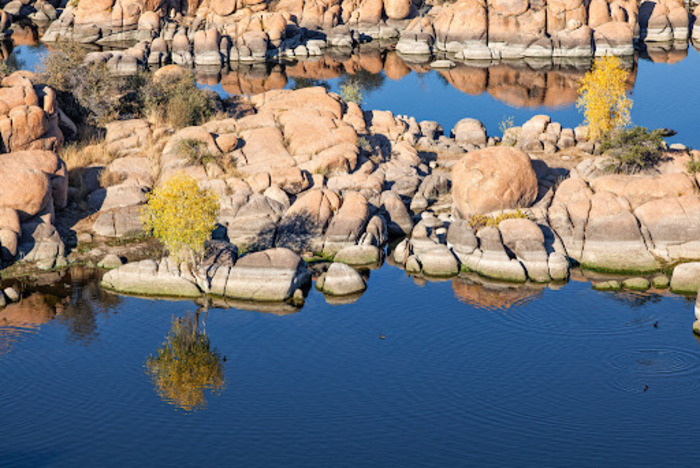
Regulations
When angling at Watson Lake, it is crucial to follow the established regulations to maintain the balance of its aquatic environment. These regulations are in place to protect the fish population and their habitats, allowing for sustainable angling for future generations.
Species-Specific Regulations
Different species of fish inhabit Watson Lake, and each has specific rules and regulations governing their harvest. For example, the lake is known for its rainbow trout, channel catfish, and crappie populations. To preserve their populations, size limits and catch limits are imposed. Ensure you familiarize yourself with the regulations for each species before casting your line.
Catch and Release
To promote sustainable angling practices and preserve the fish populations, catch and release are encouraged at Watson Lake. By releasing fish back into the lake, you contribute to maintaining a healthy ecosystem and ensuring that future anglers can enjoy the thrill of catching these beautiful fish.
Angling Permits
To legally fish at Watson Lake, you must obtain the necessary permits. They not only ensure compliance with state regulations but also support conservation efforts and the maintenance of the lake’s recreational facilities.
License
To fish in Watson Lake, you need a valid Arizona angling license. This license is required for residents and non-residents alike. By purchasing an angling license, you contribute directly to the conservation and management of Arizona’s aquatic resources.
Watson Lake Specific Permits
In addition to the Arizona angling license, certain permits may be required for angling at Watson Lake. They help manage the lake’s unique angling opportunities and maintain its natural beauty. It is important to check with local authorities or visit the official Prescott website for any specific permits or regulations that may apply.
Boating and Other Activities
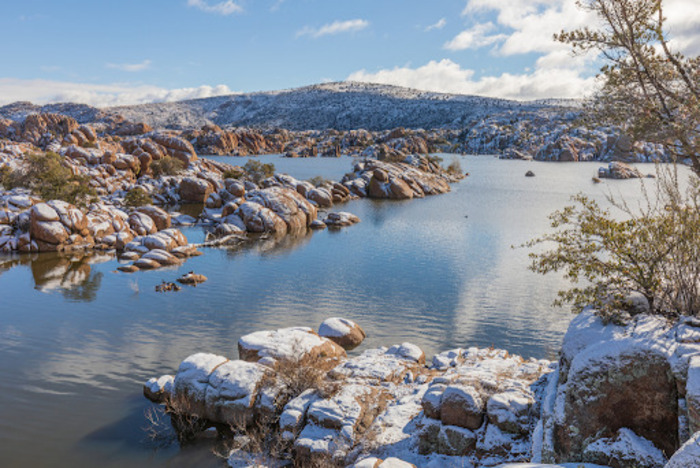
Aside from angling, Watson Lake offers an array of water activities that will keep you entertained throughout your visit. Whether you prefer kayaking, paddleboarding, or canoeing, the calm waters of the lake provide the perfect opportunity to indulge in these recreational pursuits. Feel the gentle breeze on your face as you navigate through the lake, immersing yourself in the tranquility of nature.
Surrounding Attractions
Watson Lake is not just about angling; it also boasts a scenic landscape that is worth exploring. Take a break from the water and embark on a hike along the numerous trails that surround the lake. As you wander through the picturesque terrain, you’ll encounter unique rock formations and breathtaking vistas that will leave you in awe.
Plan Your Visit
Before heading to Watson Lake, make sure to check the local regulations and any updates regarding access and activities. It’s also advisable to pack essential supplies, such as sunscreen, snacks, and water, to ensure a comfortable and enjoyable experience. Don’t forget to respect the environment and practice responsible angling and boating during your visit.
Wildlife Near Watson Lake
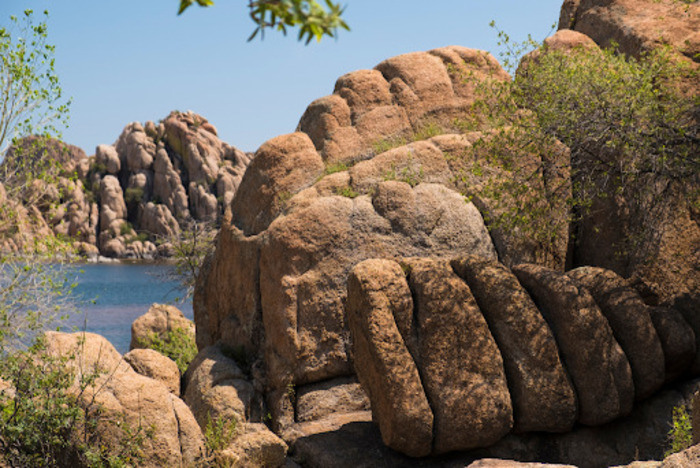
Birds
Watson Lake, located in Arizona, is home to a diverse range of bird species. Birdwatchers and angling enthusiasts alike can enjoy observing the various birds that inhabit the lake and its surrounding areas. Some of the notable bird species you may encounter include:
- Ospreys: These magnificent birds of prey are often seen soaring above the lake, searching for fish to catch with their sharp talons.
- Great Blue Herons: With their tall stature and long necks, these majestic birds can often be spotted wading in the shallow waters near the lake’s edge.
- Bald Eagles: If you’re lucky, you may catch a glimpse of these iconic birds perched on a tree branch or soaring through the sky, showcasing their impressive wingspan.
Read more: How to Fish for Trout in Lakes: Tips for Catching Lake Trout
Mammals
While primarily known for its angling opportunities, Watson Lake is also home to various mammal species. As you explore the lake and its surroundings, keep an eye out for these fascinating creatures:
- Mule Deer: These graceful animals are commonly found in the area and can often be seen grazing near the lake’s shore.
- Coyotes: Known for their adaptability, coyotes can be occasionally spotted in the vicinity of Watson Lake. They are skilled hunters and play an important role in the local ecosystem.
- Bobcats: Although elusive and rarely seen, bobcats inhabit the region surrounding Watson Lake. These solitary predators are masters of stealth and agility.
Reptiles and Amphibians
Watson Lake provides a habitat for various reptile and amphibian species. From slithering snakes to croaking frogs, the lake’s ecosystem supports a diverse array of these creatures:
- Western Diamondback Rattlesnake: This venomous snake is native to the area and plays a vital role in maintaining the balance of the ecosystem.
- Western Toad: Found near the lake’s edge, the Western Toad is a common amphibian species in the region. Its distinctive call can be heard during the breeding season.
- Common Garter Snake: Known for their colorful patterns, garter snakes can often be spotted basking in the sun or hunting for prey near the lake.
Aquatic Life
Watson Lake is teeming with a variety of aquatic life, making it an ideal destination for angling enthusiasts. Although the focus of this article is not on angling, it’s worth mentioning some of the aquatic species you may come across:
- Largemouth Bass: Known for their size and strength, largemouth bass are a popular game fish in Watson Lake. Anglers can enjoy the thrill of reeling in these powerful fighters.
- Bluegill: These small, colorful fish are abundant in the lake and provide a fun angling experience, especially for beginners or families.
- Red-eared Slider Turtle: While not a fish, the red-eared slider turtle is a common sight in the lake. These turtles can often be seen basking on logs or rocks, soaking up the Arizona sun.
Watson Lake offers a unique opportunity to experience the beauty and diversity of Arizona’s wildlife. Whether you’re an avid birdwatcher or simply appreciate the wonders of nature, a visit to this scenic lake is sure to be a memorable experience.
Disclaimer: The information provided in this article is based on reliable sources and research. It is always recommended to refer to official angling regulations and local authorities for the most up-to-date information.
FAQs
Q: Where is Watson Lake located?
A: Watson Lake is located in Prescott, Arizona.
Q: What are some tips for angling at Watson Lake?
A: Some tips for angling at Watson Lake include using lures that mimic local baitfish, targeting shallow areas near the granite boulders, and angling during the early morning or late evening for better chances of catching trophy fish.
Q: What kind of fish can be found in Watson Lake?
A: Watson Lake is known for its population of largemouth bass, smallmouth bass, crappie, and catfish.
Q: How high is Watson Lake?
A: Watson Lake sits at an elevation of approximately 1 mile (5,200 feet).
Q: Are there picnic areas available at Watson Lake?
A: Yes, there are designated picnic areas around the lake where visitors can enjoy a scenic meal amidst the natural beauty of the area.
Q: Is there any lodging available at Watson Lake?
A: While there are no lodging facilities directly at Watson Lake, there are numerous lodging options in the nearby city of Prescott, located just 4 miles south of the lake.
Q: Are boats with electric motors allowed at Watson Lake?
A: Yes, they are allowed at Watson Lake, providing visitors with a quieter and more serene experience.
Q: What activities can visitors enjoy at Watson Lake?
A: Visitors can partake in activities such as angling, hiking, rock climbing and birdwatching amidst the picturesque granite boulders surrounding the lake.
Q: How many campsites are available at Watson Lake?
A: Watson Lake offers approximately 50 individual campsites for visitors who wish to stay overnight and immerse themselves in the natural splendor of the area.
Q: What is the best time of year to visit Watson Lake for angling?
A: The best time of year to visit Watson Lake for angling is during the spring and fall seasons when the weather is milder and the fish are more active.

